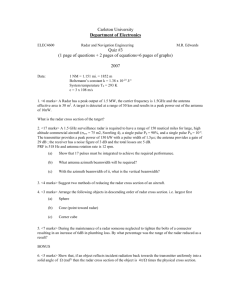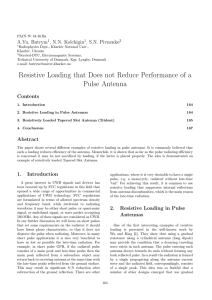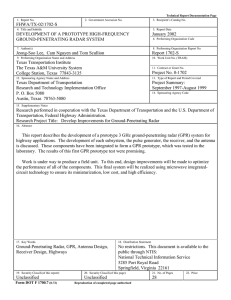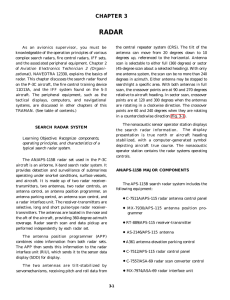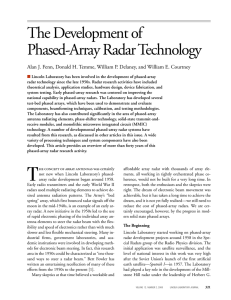Short-range UWB radar Notes 1 Options for the master thesis Håkon A. Hjortland
advertisement
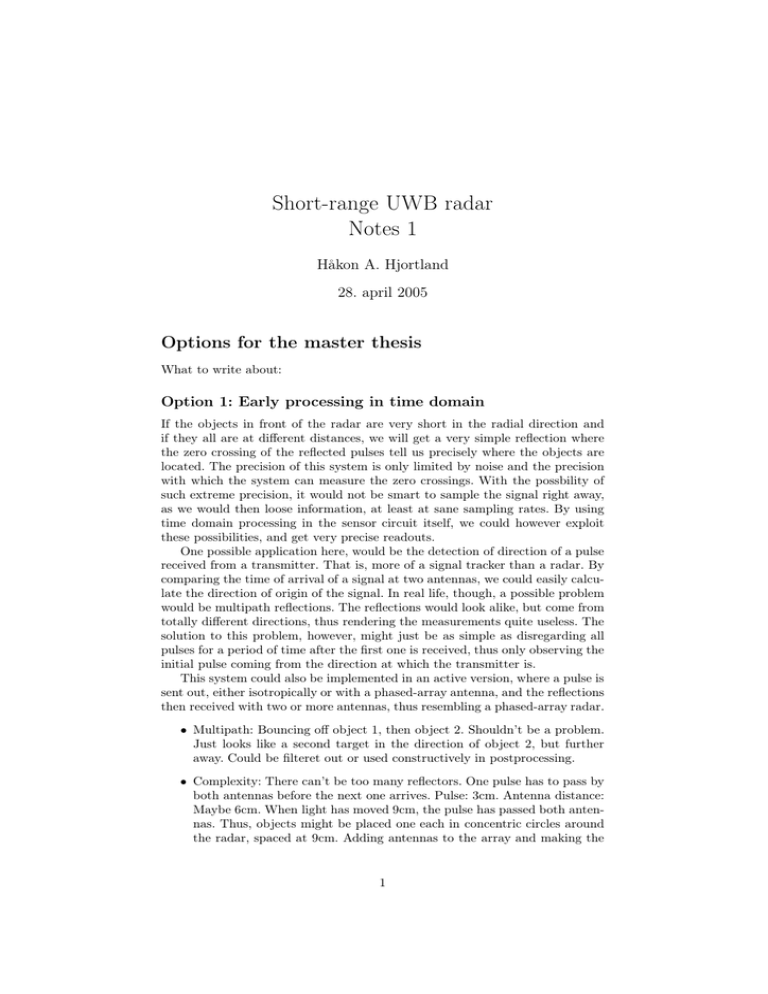
Short-range UWB radar Notes 1 Håkon A. Hjortland 28. april 2005 Options for the master thesis What to write about: Option 1: Early processing in time domain If the objects in front of the radar are very short in the radial direction and if they all are at different distances, we will get a very simple reflection where the zero crossing of the reflected pulses tell us precisely where the objects are located. The precision of this system is only limited by noise and the precision with which the system can measure the zero crossings. With the possbility of such extreme precision, it would not be smart to sample the signal right away, as we would then loose information, at least at sane sampling rates. By using time domain processing in the sensor circuit itself, we could however exploit these possibilities, and get very precise readouts. One possible application here, would be the detection of direction of a pulse received from a transmitter. That is, more of a signal tracker than a radar. By comparing the time of arrival of a signal at two antennas, we could easily calculate the direction of origin of the signal. In real life, though, a possible problem would be multipath reflections. The reflections would look alike, but come from totally different directions, thus rendering the measurements quite useless. The solution to this problem, however, might just be as simple as disregarding all pulses for a period of time after the first one is received, thus only observing the initial pulse coming from the direction at which the transmitter is. This system could also be implemented in an active version, where a pulse is sent out, either isotropically or with a phased-array antenna, and the reflections then received with two or more antennas, thus resembling a phased-array radar. • Multipath: Bouncing off object 1, then object 2. Shouldn’t be a problem. Just looks like a second target in the direction of object 2, but further away. Could be filteret out or used constructively in postprocessing. • Complexity: There can’t be too many reflectors. One pulse has to pass by both antennas before the next one arrives. Pulse: 3cm. Antenna distance: Maybe 6cm. When light has moved 9cm, the pulse has passed both antennas. Thus, objects might be placed one each in concentric circles around the radar, spaced at 9cm. Adding antennas to the array and making the 1 Threshold Sample LNA Limiting amp Micro−sweep ∆τ Sampler/counter τ Sampler/counter τ Sampler/counter τ Sampler/counter τ Figur 1: array longer, would probably improve an analog system, and allow it to focus its sight with a narrower beam. But since we’re using zero-crossing detection, this will not give an easy improvement for us, as zero-crossings are very prone to interference, and signals outside the antenna lobe thus will cause major distortion of the signal inside the lobe. Previous work Æther wire & location, inc. http://www.aetherwire.com/Aether\_Wire/aether.html Option 2: Raw readout For imaging applications, for example through-wall radars and medical equipment, a raw readout of the received reflection is desireable, so that several complex returns from different angles can be combined in postprocessing to create an image of the scanned area. Implementation Signal path, see figure 1. A threshold is chosen, and binary sampling performed. By varying the threshold, an acquisition with full voltage range can be made. Extensions Reading from many antennas at the same time, or at least be able to switch between them. 2 Previous work McEwan Technologies, LLC http://www.mcewantechnologies.com/ 3

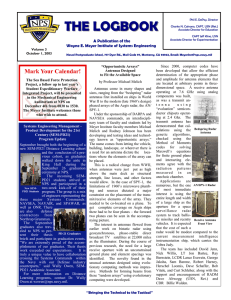
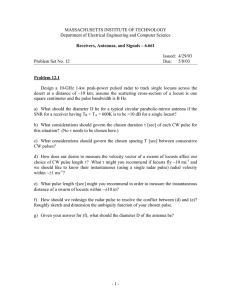


![EEE 443 Antennas for Wireless Communications (3) [S]](http://s3.studylib.net/store/data/008888255_1-6e942a081653d05c33fa53deefb4441a-300x300.png)
